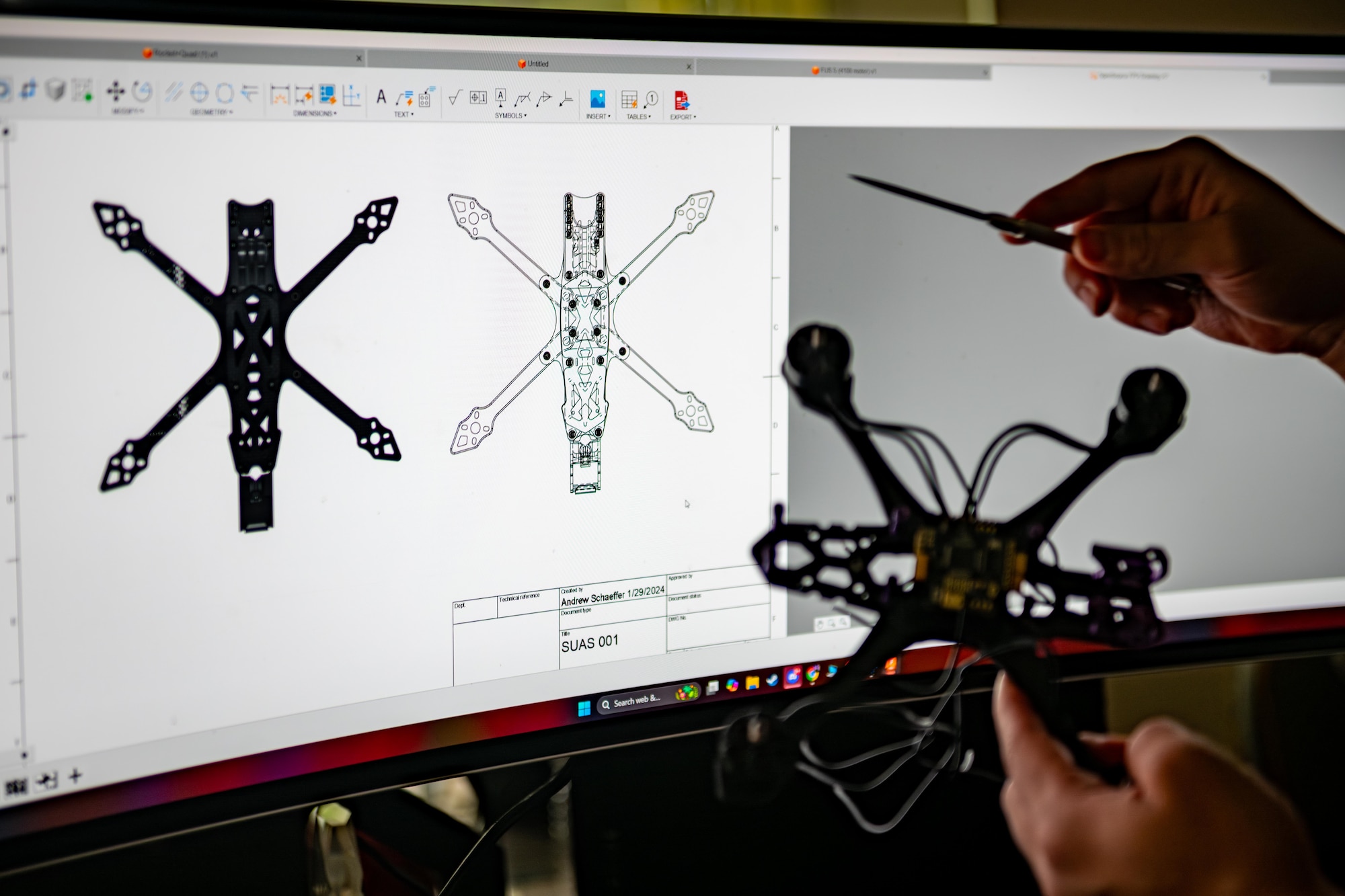
250630-F-VQ736-1038
U.S. Air Force Tech. Sgt. Andrew Schaeffer, 35th Cargo Deployment Function innovation noncommissioned officer in charge, showcases the design of a 3D-printed unmanned aerial vehicle training aid at Misawa Air Base, Japan, June 30, 2025. By turning innovative ideas into tactical assets, the Innovation Lab is shaping high-impact training for Operation Sentinel Samurai, a department level explosive ordnance disposal training exercise, reinforcing the 35th Fighter Wing’s forward posture in the Indo-Pacific. (U.S. Air Force photo by Airman Hannah Bench)
1 of 5
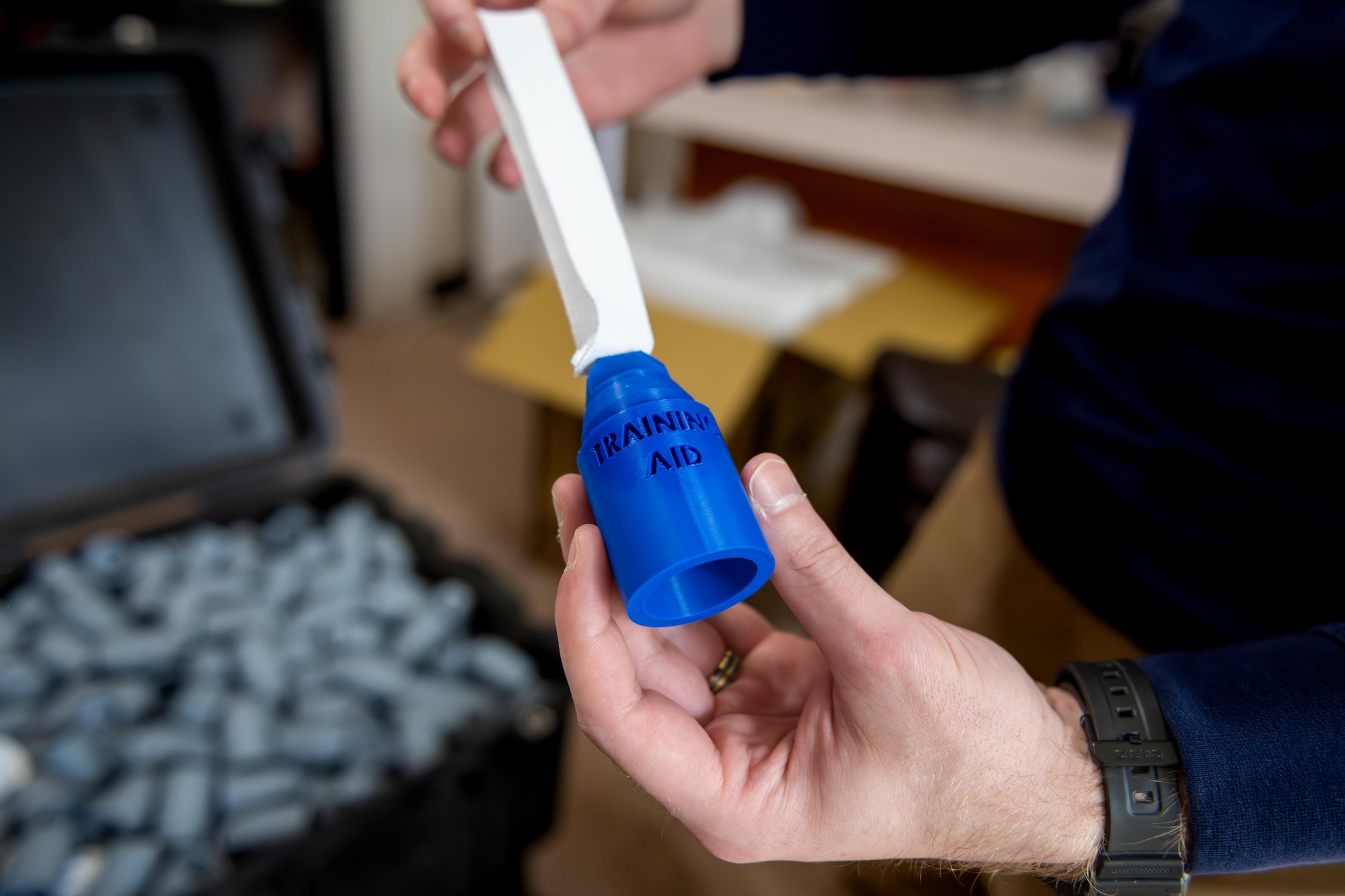
250630-F-VQ736-1006
U.S. Air Force 1st Lt. Isaac Loring, lead Project Arc engineer assigned to the Innovation Lab, demonstrates the capabilities of a 3D-printed grenade training aid at Misawa Air Base, Japan, June 30, 2025. Innovation Lab Airmen are developing field-ready assets for Operation Sentinel Samurai, a department level explosive ordnance disposal training exercise, sharpening the 35th Fighter Wing’s preparedness in high-threat environments. (U.S. Air Force photo by Airman Hannah Bench)
2 of 5
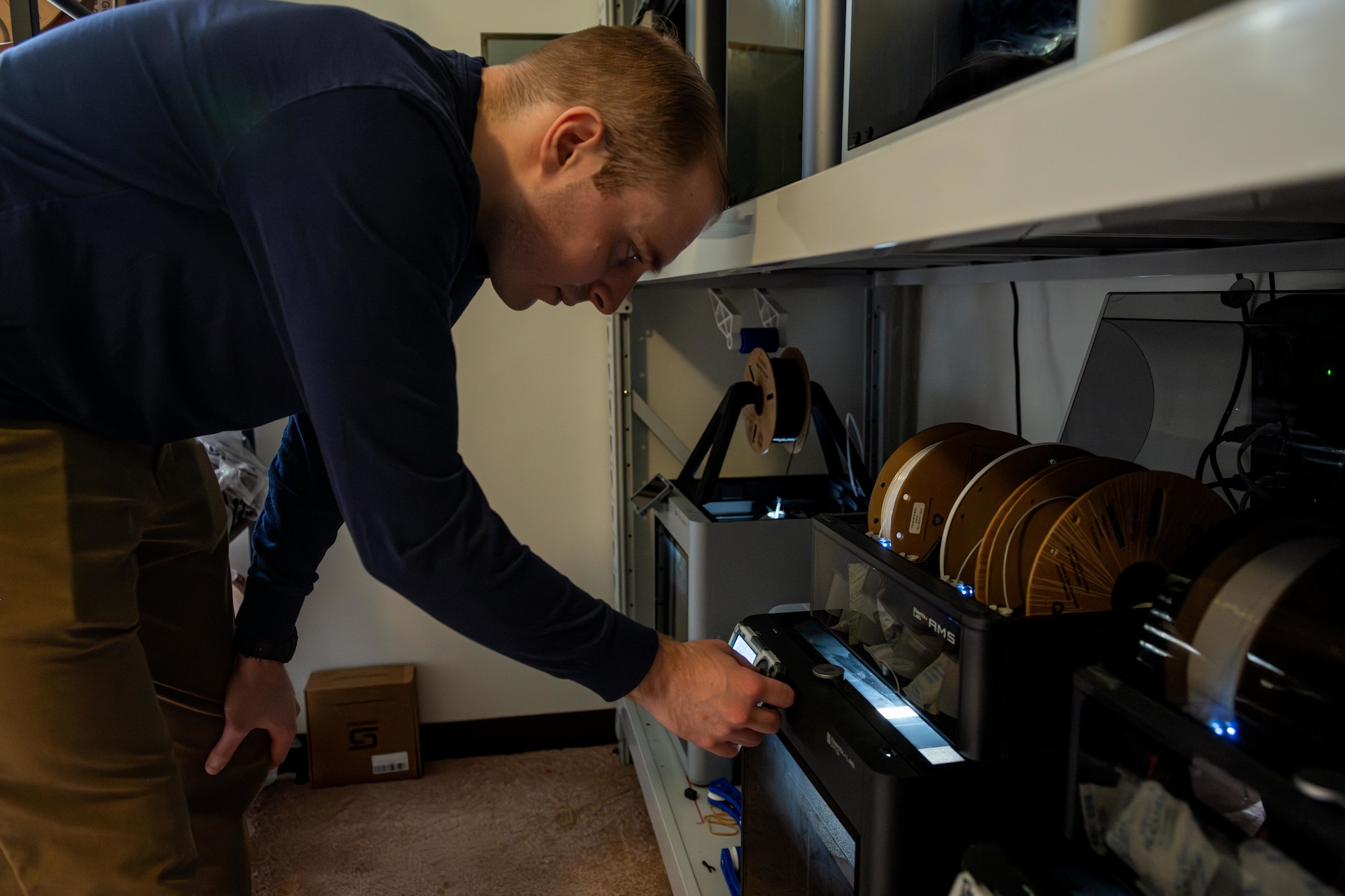
250630-F-VQ736-1024
U.S. Air Force 1st Lt. Isaac Loring, lead Project Arc engineer assigned to the Innovation Lab, checks on the progress of 3D-printed training aids at Misawa Air Base, Japan, June 30, 2025. Through rapid prototyping, the Innovation Lab is building custom devices to boost joint-force realism and sharpen the 35th Fighter Wing’s tactical edge during Operation Sentinel Samurai, a department level explosive ordnance disposal training exercise. (U.S. Air Force photo by Airman Hannah Bench)
3 of 5
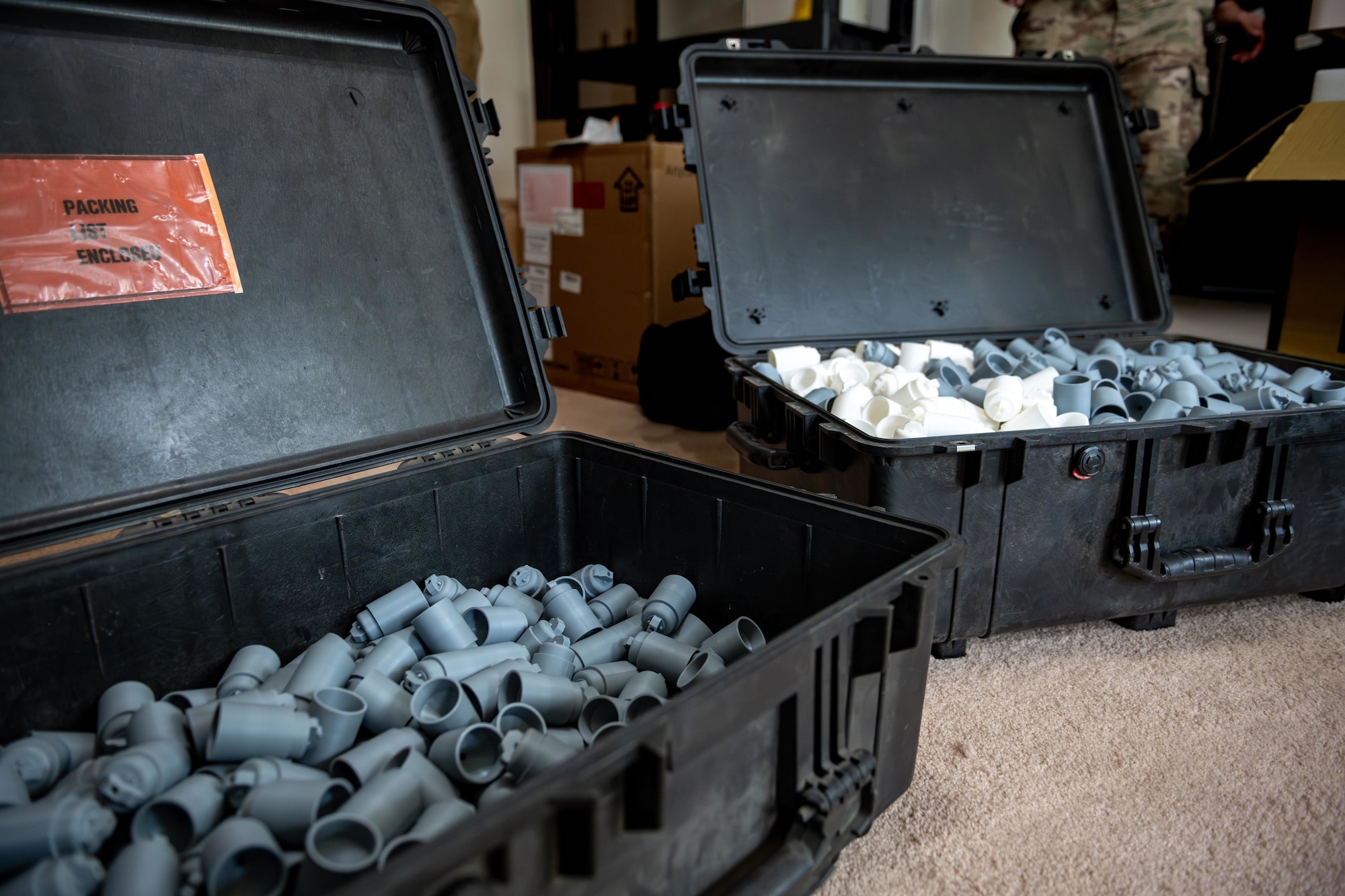
250630-F-VQ736-1009
Two cases of 3D-printed training aid grenades sit open for counting at Misawa Air Base, Japan, June 30, 2025. The custom-built training aids created by the Innovation Lab will enable explosive ordnance disposal (EOD) teams to rehearse high-threat scenario responses during Operation Sentinel Samurai, a department level EOD exercise, in support of the 35th Fighter Wing’s Indo-Pacific defense mission. (U.S. Air Force photo by Airman Hannah Bench)
4 of 5
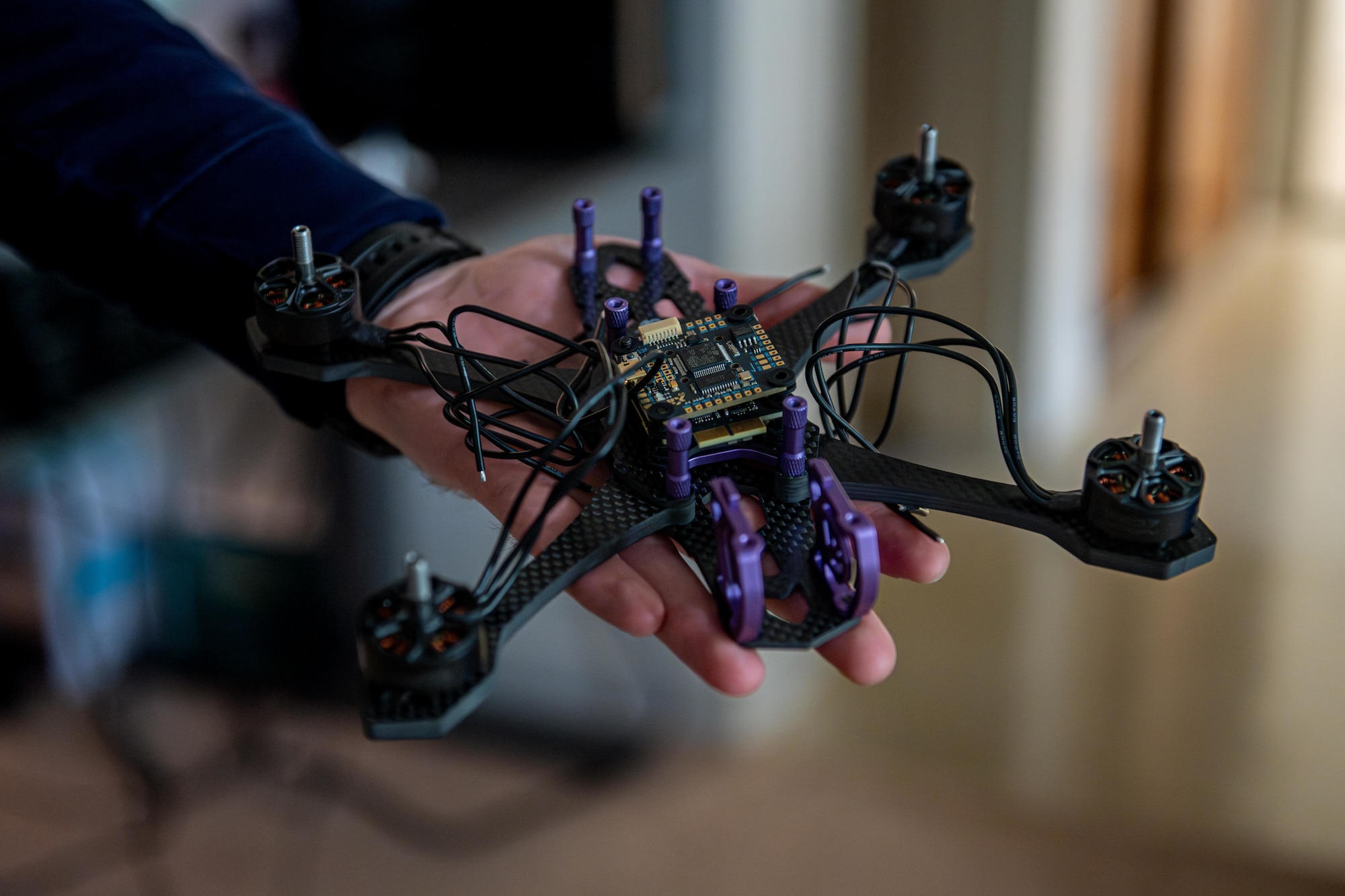
250630-F-VQ736-1018
U.S. Air Force 1st Lt. Isaac Loring, lead Project Arc engineer assigned to the Innovation Lab, displays a 3D-printed unmanned aerial vehicle training aid at Misawa Air Base, Japan, June 30, 2025. Through fast, cost-effective production, the Innovation Lab will enable realistic joint-force training in Operation Sentinel Samurai, a department level explosive ordnance disposal exercise, contributing to the 35th Fighter Wing’s operational edge. (U.S. Air Force photo by Airman Hannah Bench)
5 of 5
MISAWA AIR BASE, Japan – The Innovation Lab at Misawa Air Base is helping explosive ordnance disposal (EOD) teams across the Indo-Pacific train smarter, faster and cheaper by providing custom 3D-printed training aids for exercise Operation Sentinel Samurai.
The department level exercise brings together EOD units from the U.S. Air Force and Marine Corps to sharpen their skills in identifying, handling and neutralizing explosive threats.
To support the event, the Innovation Lab is printing 11 types of training aids, ranging from grenades to large munitions, designed to simulate real-world threats EOD teams might encounter. These tools will be used throughout the exercise to test how EOD technicians respond to explosive hazards and maintain airfield operations under pressure.
“Simply put, we couldn’t pull off an exercise of this scale without them,” said U.S. Air Force Master Sgt. Dale Janik, 35th Civil Engineer Squadron EOD logistics section chief. “They’ve printed around 1,500 unexploded ordnance training aids so far. That’s five times more than our current training aid inventory.”
The Innovation Lab delivers rapid, cost-efficient solutions that enhance training effectiveness and drive mission readiness across the 35th Fighter Wing. In one project, the team printed 1,000 grenade training aids for just $290, a 99.56% savings compared to the roughly $200,000 it would normally cost.
“The ability of the Air Force to rapidly prototype, test and go after new technology has been exciting,” said U.S. Air Force 1st Lt. Isaac Loring, lead Project Arc engineer assigned to the Innovation Lab. “We can create exactly what the unit needs, quickly and affordably, without relying on large, slow procurement processes.”
The lab also produces low-cost unmanned aerial vehicles shells for training, costing around $4 each compared to hundreds of dollars on the commercial market. For larger, more complex items, the lab creates custom designs in-house, enabling EOD teams to train with highly realistic, mission-tailored devices. This approach allows rapid scaling of inventory when a design proves effective, minimizing cost and maximizing training value.
“I’m just excited to share this,” said Loring. “This really shows what the Innovation Lab can do. We’re here, and we’re ready to help however we can.”
Turning ideas into tools, the Innovation Lab is helping the 35th Fighter Wing keep its edge by improving readiness, building partnerships and preparing Airmen to win in any environment. Through efforts like exercise Operation Sentinel Samurai, the lab continues to deliver innovative, mission-focused solutions that enhance joint capabilities and strengthen the Indo-Pacific defense posture.